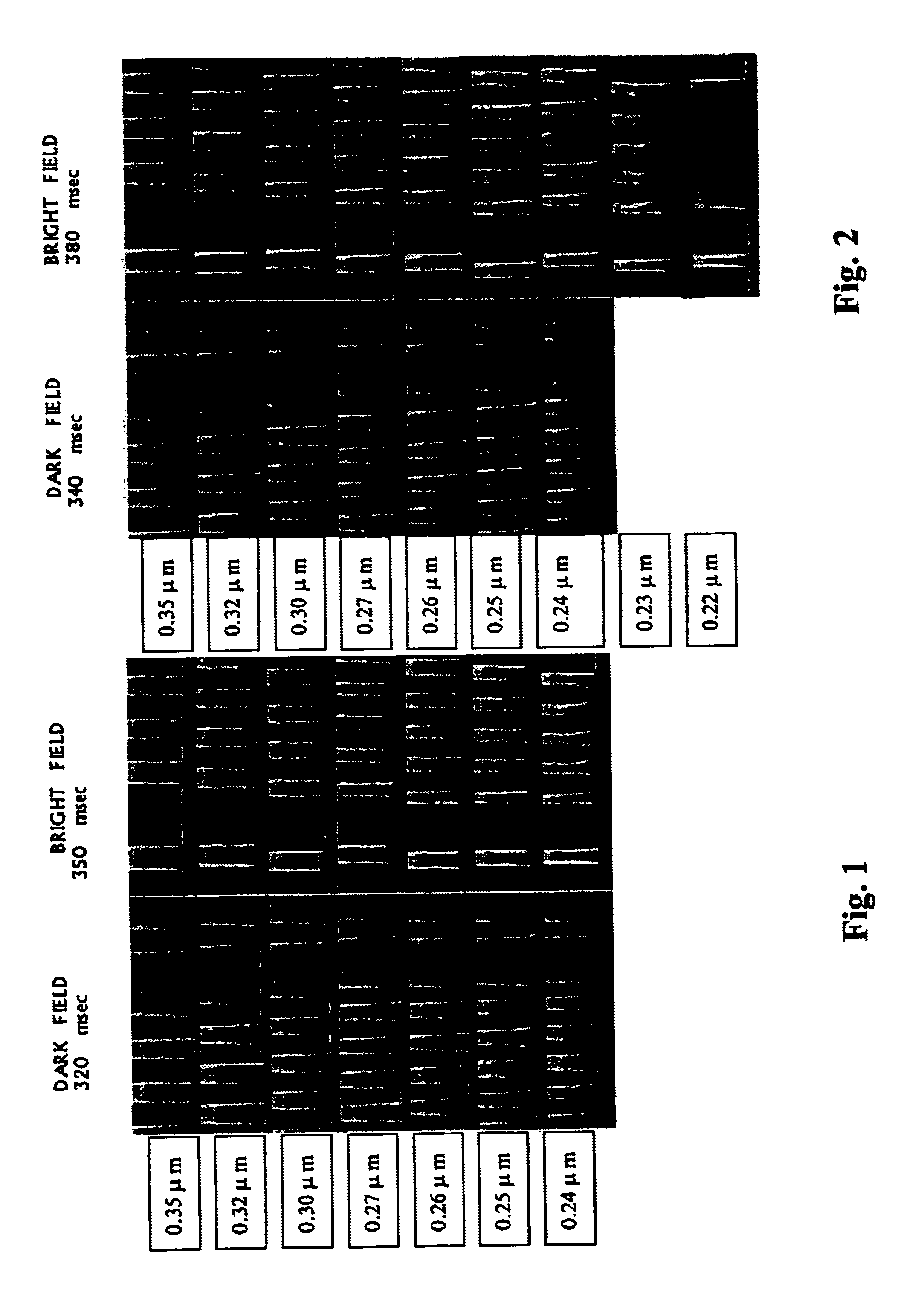Anti-reflective coating composition with improved spin bowl compatibility
a technology of anti-reflective coating and spin bowl, which is applied in the direction of polyether coating, nuclear engineering, electrical equipment, etc., can solve the problems of reducing the resolution of the photoresist, affecting the shelf life of the photoresist, and affecting the image quality of the processed photoresist, so as to achieve the effect of prolonging the shelf li
- Summary
- Abstract
- Description
- Claims
- Application Information
AI Technical Summary
Benefits of technology
Problems solved by technology
Method used
Image
Examples
example 1
Comparative Example (Control)
[0028]An anti-reflective coating was prepared according to prior art procedures in order to provide a control standard for spin bowl compatibility tests. A mixture containing the following ingredients was prepared: 11.60% by weight polymer solids (50% by weight benzyl methacrylate and 50% by weight hydroxypropyl methacrylate); 0.58% by weight of Powderlink® 1174 (a crosslinking agent obtained from Cytec); 0.1% by weight p-toluenesulfonic acid (pTSA); 9.69% by weight propylene glycol monomethyl ether acetate (PGMEA); 77.96% by weight propylene glycol monomethyl ether (PGME); and 0.07% by weight surfactant (FC-171, obtained from 3M). The mixture was stirred for one hour to yield a clear solution followed by ion exchange with 650C beads. The formulation was then filtered through a 1×0.2 μm absolute filter and a 2×0.1 μm absolute filter. The filtered material was spincoated onto a silicon wafer at a speed of 2500 rpm for 60 seconds followed by baking at 175°...
example 2
Preparation of an Anti-Reflective Coating According to the Invention
[0029]A mixture of the following ingredients was prepared: 11.60% by weight polymer solids (50% benzyl methacrylate and 50% hydroxypropyl methacrylate); 0.58% by weight Powderlink 1174; 0.075% by weight Bisphenol S (obtained from Aldrich); 0.025% by weight pTSA; 9.69% by weight PGMEA; 77.96% PGME; and 0.07% by weight FC-171 surfactant. The mixture was stirred for one hour to yield a clear solution followed by ion exchange with 650C beads. The formulation was then filtered through a 1×0.2 μm absolute filter and a 2×0.1 μm absolute filter. The filtered formulation was spincoated onto a silicon wafer at a speed of 2500 rpm for 60 seconds followed by baking at 175° C. for one minute. The resulting anti-reflective film had a thickness of about 880 Å. The absorbance of the film was as follows: about 13.66 / μm at a wavelength of 193 nm; about 0.54 / μm at a wavelength of 248 nm; and about 0.10 / μm at a wavelength of about 365 ...
example 3
Preparation of an Anti-Reflective Coating According to the Invention
[0030]An anti-reflective coating was prepared following the procedure described above in Example 2, but with 0.1% by weight Bisphenol S being used in place of 0.075% by weight Bisphenol S and 0.025% by weight pTSA.
PUM
| Property | Measurement | Unit |
|---|---|---|
| temperature | aaaaa | aaaaa |
| temperature | aaaaa | aaaaa |
| pKa | aaaaa | aaaaa |
Abstract
Description
Claims
Application Information
 Login to View More
Login to View More - R&D
- Intellectual Property
- Life Sciences
- Materials
- Tech Scout
- Unparalleled Data Quality
- Higher Quality Content
- 60% Fewer Hallucinations
Browse by: Latest US Patents, China's latest patents, Technical Efficacy Thesaurus, Application Domain, Technology Topic, Popular Technical Reports.
© 2025 PatSnap. All rights reserved.Legal|Privacy policy|Modern Slavery Act Transparency Statement|Sitemap|About US| Contact US: help@patsnap.com



